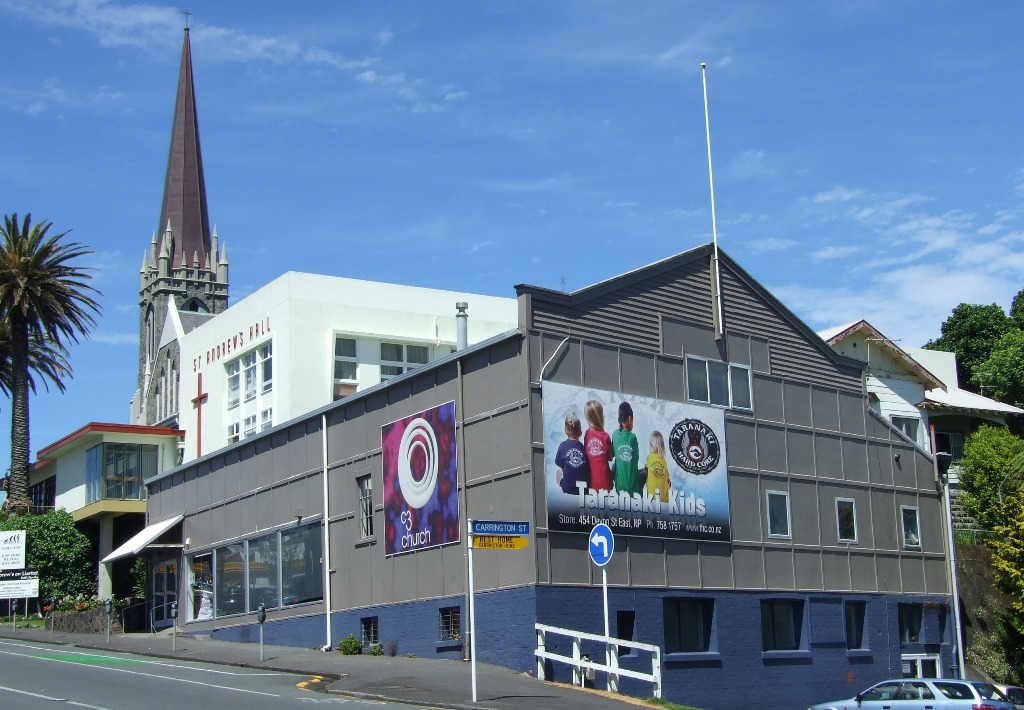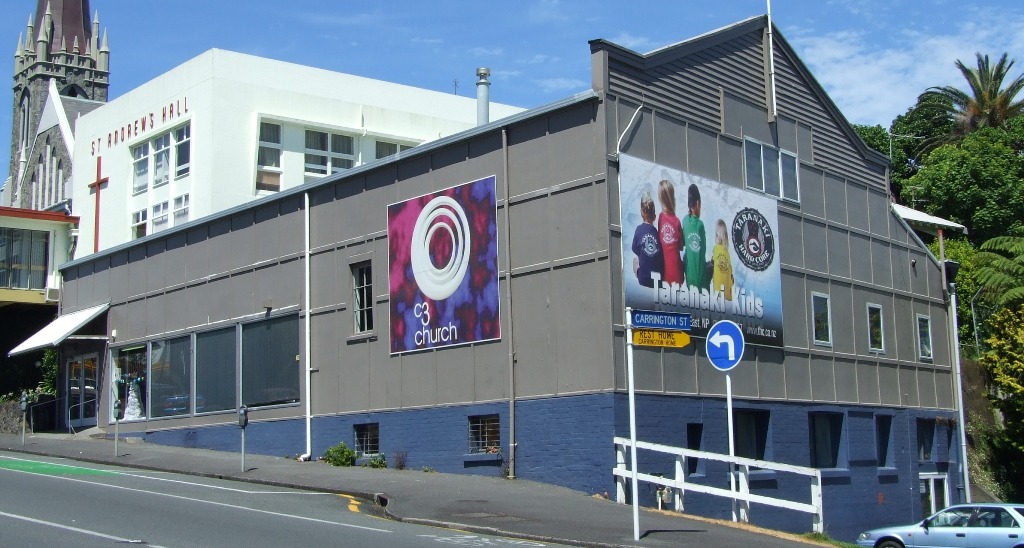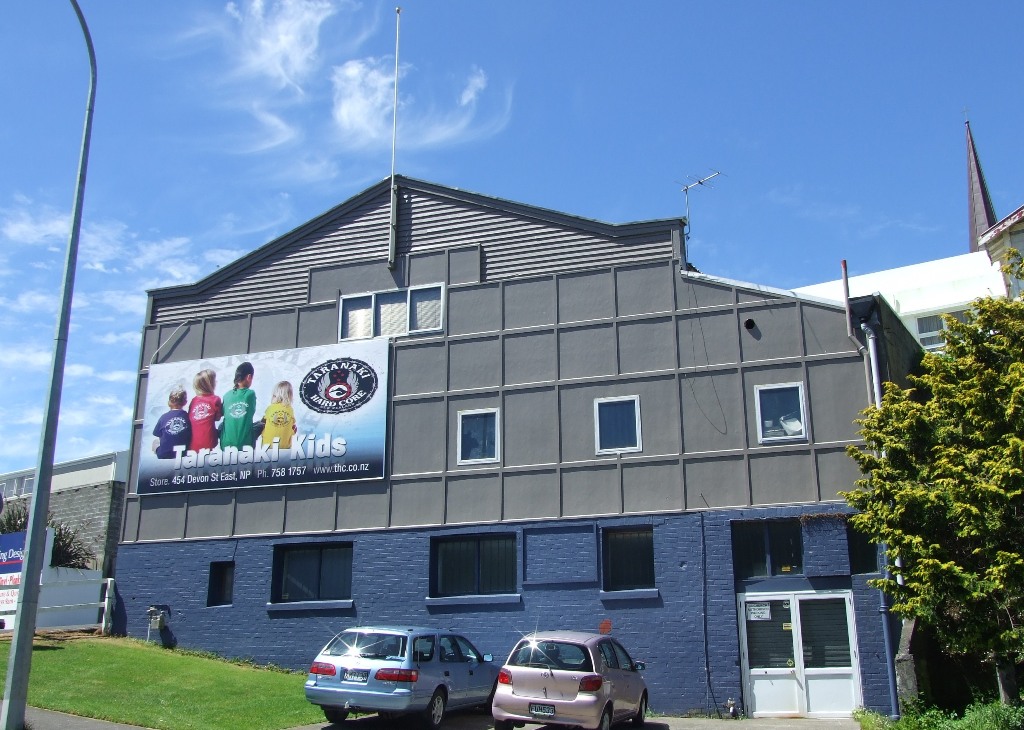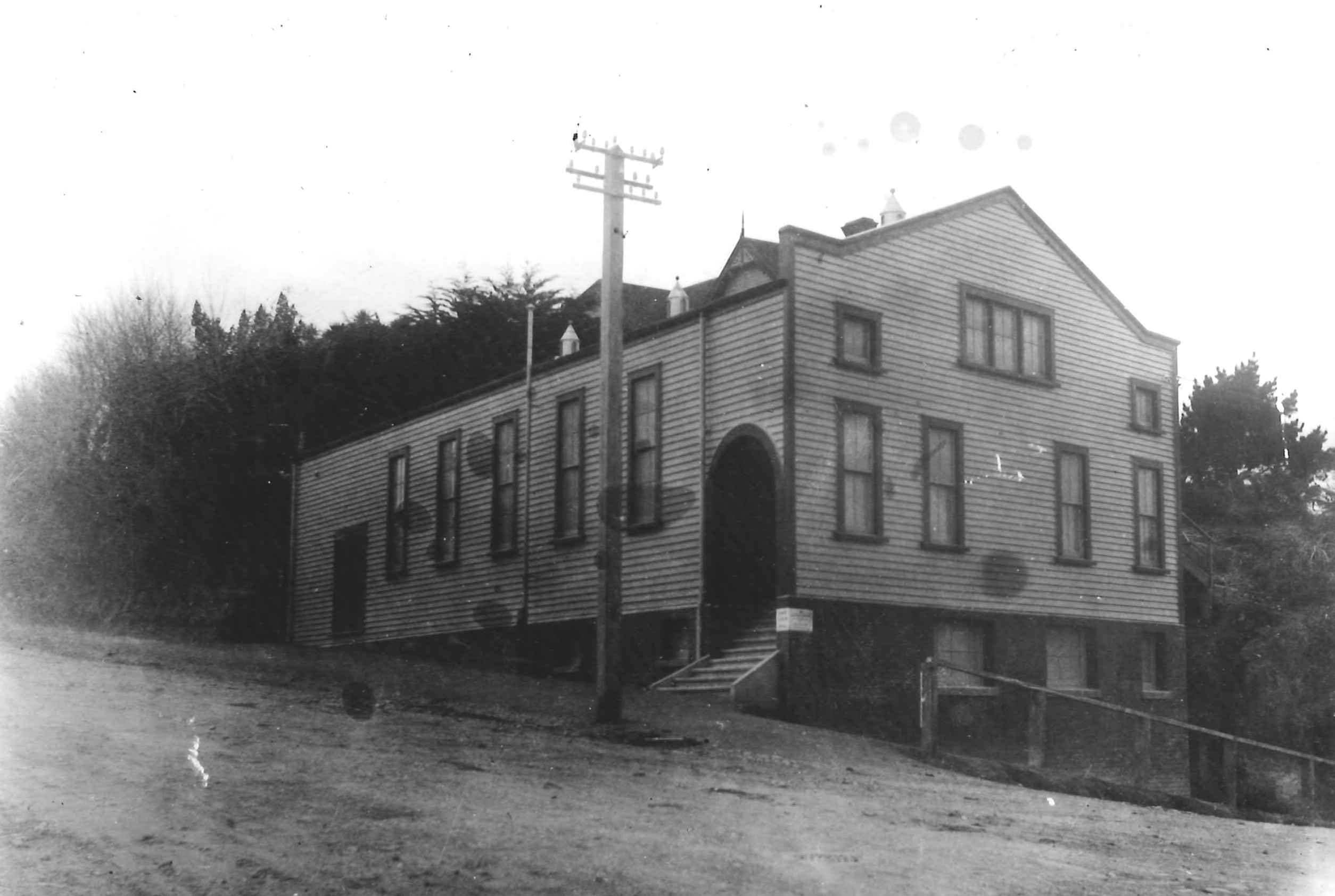







This building on the corner of Courtenay and Carrington Streets features in the 1995 N.P.D.C. Heritage Study in a section called "Modified Buildings". At the time of the study it was the retail outlet of Walsh Appliances. Since about 2011 it has been the base of "C3" Church.
The building was constructed in 1911 (note the 1995 Study uses the incorrect date of 1919), and was originally called the Good Templar's Hall - the Templar's were devoted to the temperance movement which was seemingly well supported at the time in New Plymouth. The foundation stone for the building was laid on 27 April 1911. The building was described in detail by the Taranaki Daily News on 8 August 1911. For more on the temperance movement see this Taranaki Herald article following the opening the hall.
A permit for a "Hall" on Town Section 942 was granted by the Borough Council in March 1911, with an estimated cost of £947. The contractor was Mr James Salt.
In November 1918, at the height of the influenza pandemic in New Plymouth, the hall was fitted up by the Plunket Society for looking after babies whose mothers were sick.
This was also the time New Zealand's voluntary unionism era was peaking and the Taranaki Worker's Council was looking to construct a Workers' Hall. However, in the Taranaki Daily News on 12 January 1920 it was announced that instead they had taken over the Good Templar Hall. Renamed the Workers' Social Hall, it was also known as the "Workers' Hall" and (somewhat confusingly) the "Social Workers' Hall" and was used for a mix of social activities including entertainment and union meetings. From at least 1944 the building was renamed the "Taranaki Trades Hall". At that time, it included the headquarters of the Taranaki Amalgamated Society of Carpenters and Joiners, Taranaki Local Authorities Officers’ Industrial Union of Workers, Taranaki Plasterers’ Industrial Union of Workers and the Taranaki Caretakers and Lift Attendants’ Union. It was called the "Trades Hall" until at least 1969.
It was originally clad in lapped weatherboards with tall double-hung windows.
According to the Heritage Study, "the fact that the form of the building is intact, it would be possible to restore some authenticity to a building of considerable social, historical and architectural importance."
Please do not reproduce these images without permission from Puke Ariki.
Contact us for more information or you can order images online here.